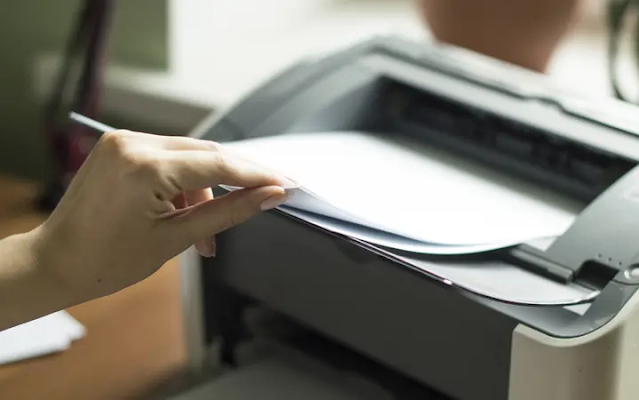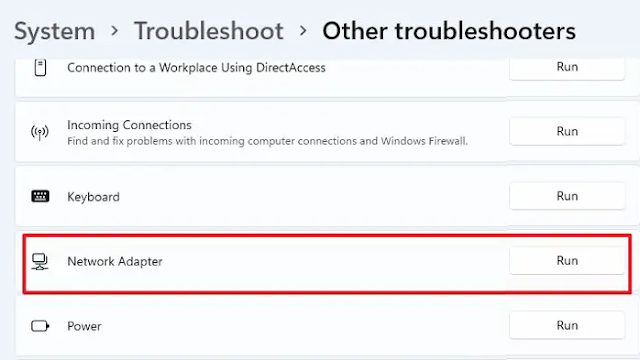If you're worried about slow printing, or your printer keeps you waiting for a printout, you've come to the right place. In this post, we will tell you some solutions that you can try to solve this problem.
Method 1: Reset the printer
The first step to take if you're experiencing slow printer printing is to reset the printer, which can be done with a simple reboot. Printers generally follow a mechanism to avoid overheating and reduce speed to generate less heat. This usually happens when your printer is left on for a long time
1. Turn off your printer and try to disconnect the power cord.
2. Wait for a minute to ensure that all electrical components are fully unplugged and any temporary memory.
3. Reconnect the power cable and turn on the power.
You can now issue any print job to check if the printer's speed has increased, if not then move on to the next step.
Method 2: Check the printer preferences
Printer preferences can also lead to a slow printer issue and this can be fixed by changing the print quality setting from Best to Normal or draft for even faster prints. However, the quality of a print is inversely proportional to the print speed, meaning it decreases as the print speed gets faster.
1. Press Windows Keys + S and type Printer in the search box.
2. Click Printers & Scanners in System Settings and a new window will open.
3. Locate your printer and click the Manage button.
4. Now click on Printing Preferences and a new popup will appear.
5. Click the Paper/Quality tab and select Media as Plain Paper.
6. Next, select the Draft option under Quality Settings.
7. Click Apply and then click OK.
Printer Speed will now be improved after you have changed the quality to Draft. However, the print quality will be reduced. Also, be sure to choose Black & White if you don't want color prints. This will fix the printer and it will take a long time to fix the printing problem quickly.
Method 3: Restart the Printer Spooler
The operating system sends documents to the printer using a Windows Service called Printer Spooler. This service manages all print jobs and tends to develop a slow response if a lot of data is clogged together. In this scenario, you can restart the printer spooler service by following these steps:
1. Press Windows Keys + R to invoke the RUN box and enter Services.msc in the text space. Click the OK button or press the enter key to open the Services window.
2. Locate the Print Spooler service in the alphabetical list of services and right-click to bring up the context menu.
3. Click Stop and minimize the Services window.
4. Now open the RUN box again by pressing Windows Keys + R and typing Spool then pressing Enter key.
5. A folder will open in File Explorer where you have to double click on the PRINTERS folder.
6. Here you will find a print queue. Delete all the pending files present in this folder.
7. Then go to the Services window again and right-click the Print Spooler. Click Start.
8. Now give a new Print command to check the printer’s speed.
Method 4: Network Connection
For network printers, the slow printing problem can be caused by a network problem. If you are using a network connection, you should restart at least every 24 hours. In the case of a wired printer, make sure that the ethernet cable is in place. For wireless printers, restart your router and close all unwanted bandwidth-hungry applications to increase the printer's speed.
Alternatively, you can run the Network Troubleshooter wizard available under Settings > System > Troubleshoot > Other troubleshooters > Network Adapter.
Check your network connection again and print. If the problem persists, try the next method.
Method 5: Update your printer driver
The printer driver is a program that allows your computer to communicate with your printer. If you’re using a faulty or outdated printer driver, you may encounter the slow printing issue. To solve the potential problem and ensure your printer works properly, you need to make sure you’re using the latest printer driver.
Manual driver update – You can update your printer driver manually by going to the manufacturer’s website for your printer, and searching for the most recent correct driver, then follow the on-screen instructions to download and install it. Be sure to choose only drivers that are compatible with your Windows version.
Here we list the common printer manufacturer for you:
Final Word on Tips on How to Fix Slow Printing in Windows PC
The above steps have been compiled from various technical troubleshooting forums and will be helpful if your printer is taking a long time to print. You can try each step and mention it in the comments section below to let us know which one works for you. If you know any other method on how to fix slow printing problem in Windows PC then write that down.
















No comments:
Post a Comment